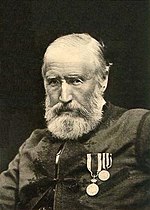Search results
Appearance
There is a page named "John Simpson (artist)" on Wikipedia
- John Philip Simpson (1782–1847) was a British painter, known for his portraits. Simpson was born in London in 1782 and was a student at the Royal Academy...4 KB (392 words) - 16:31, 22 September 2022
- Simpson (artist) (1782–1847), British painter who painted The Captive Slave John Simpson (actor/producer), Canadian actor Sir John William Simpson (1858–1933)...5 KB (615 words) - 18:38, 21 June 2024
- actor. As of February 2022, he has released seven albums as a solo artist. Simpson's style has been met with critical favor and frequent comparisons to...56 KB (4,803 words) - 09:11, 9 June 2024
- Gallery. In 2009 Simpson’s first major exhibition ‘Almost There’ launched. Simpson collaborated with twelve bands and solo artists (including The Miserable...6 KB (537 words) - 15:48, 20 December 2023
- Cody Robert Simpson (born 11 January 1997) is an Australian singer, actor, and swimmer. Since his debut as a recording artist, he has released four solo...53 KB (4,468 words) - 19:52, 27 June 2024
- wife, the artist Jay Defeo (best known for her ten-foot masterpiece, The Rose), on Bay Street in San Francisco. During that time, Simpson and Dee ran...21 KB (2,487 words) - 08:47, 1 April 2024
- Jessica Ann Simpson (born July 10, 1980) is an American singer, actress, and businesswoman. After performing in church choirs as a child, Simpson signed with...95 KB (8,202 words) - 11:20, 1 July 2024
- Simpson (1846–1932), American biologist Charles Walter Simpson (Canadian artist) (1878–1942), Canadian artist and illustrator Charles Walter Simpson (English...41 KB (5,092 words) - 02:08, 28 June 2024
- Ashlee Ross-Næss (née Simpson; born October 3, 1984), known professionally as Ashlee Simpson, is an American singer, songwriter, actress and television...63 KB (6,257 words) - 00:26, 2 July 2024
- William Simpson may refer to: William Simpson (portrait artist) (c. 1818–1872), African American painter and civil right activist William Simpson (Scottish...3 KB (402 words) - 12:02, 19 June 2024
- Orenthal James Simpson (July 9, 1947 – April 10, 2024) was an American football player, actor, and media personality who played in the National Football...204 KB (17,227 words) - 05:55, 1 July 2024
- Charles Robert Simpson (born 7 June 1985) is an English singer, songwriter, and musician from Suffolk. He is a member of the BRIT Award winning pop-punk...31 KB (2,913 words) - 14:33, 4 May 2024
- This makes Simpson the first artist to ever be nominated for both Best Rock Album and Best Country Album by the Grammy Awards. Simpson and his band...17 KB (1,273 words) - 17:41, 24 April 2024
- William Simpson (28 October 1823 – 17 August 1899) was a Scottish artist, war artist and war correspondent. Born into poverty in Glasgow, Simpson went on...26 KB (3,266 words) - 11:20, 28 May 2024
- James Simpson was a criminal trial in Los Angeles County Superior Court, in which former National Football League (NFL) player and actor O. J. Simpson was...274 KB (27,389 words) - 03:31, 1 July 2024
- The Simpson family are the main fictional characters featured in the animated television series The Simpsons. The Simpsons are a nuclear family consisting...68 KB (8,397 words) - 10:15, 30 June 2024
- Jacqueline "Marge" Simpson (née Bouvier) is a character in the American animated sitcom The Simpsons and part of the eponymous family (The Simpsons). Voiced by...57 KB (5,965 words) - 01:14, 26 June 2024
- Lane, Sarah Paulson, David Schwimmer, John Travolta, and Courtney B. Vance. O.J. Simpson, Nicole Brown Simpson, Bill Clinton, Barbara Walters, Rodney...72 KB (3,963 words) - 04:26, 16 June 2024
- Bartholomew Jojo "Bart" Simpson is a fictional character in the American animated television series The Simpsons and part of the Simpson family. He is voiced...92 KB (10,046 words) - 07:40, 3 July 2024
- The Simpsons is an American animated sitcom created by Matt Groening for the Fox Broadcasting Company. Developed by Groening, James L. Brooks, and Sam...237 KB (20,557 words) - 07:17, 3 July 2024
- Portugal. Simpson was rather a skilful portraitist than an artist. His portraits are not without power, but lack instinct and penetration. One of John Burnet
- It's not a death match between Ray Charles and Jessica Simpson. No byline (2004-12-20), "John Mayer". Newsweek. 144 (25):71 There's a real self-serving
- a Japanese avant-garde artist, John and Yoko decided to dedicate their talents to try to obtain world peace. With Yoko, John staged a “bed-in for peace”










